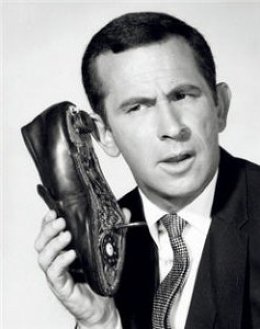In the James Bond movies, all of the wonderful gadgets available to 007 came from the Q division. If you imagine Q putting out a mail-order catalog, then, it would likely be a pretty impressive affair, filled with X-ray sunglasses, exploding cigarettes, laser-shooting fountain pens and the occasional big ticket item like an invisible Aston Martin or a buzz saw beveled Rolex.
The shopping catalog favored by real spies at the NSA? Decidedly more mundane, as the most recent in a seemingly endless succession of leaks about the National Security Agency's spying program prove. But don't let that fool you. These mail-order gadgets are far more likely to be used by a spy against you than any tube of explosive toothpaste or rocket-firing boombox from Q branch.

Earlier this week, German newspaper Der Spiegel got its hands on what they describe as a 50-page document which "reads like a mail-order catalog, one from which other NSA employees... can order technologies for tapping their targets' data." The document describes an NSA division called ANT ("probably standing for Advanced or Access Network Technology"), which specifically focuses on making electronic break-in tools available to members of the NSA, for a price.
According to Der Spiegiel, this catalog features countless items which are designed to slice right through the security on a smartphone, tablet, computer, or server, and then tap a target's data. These devices are called implants, and the NSA deploys them when traditional remote hacking techniques won't work. And the NSA has implants available for a huge number of big brand electronics makers, including Cisco, Dell, Seagate, Western Digital, Maxtor and Samsung.
What kind of devices are in the catalog? Most of the time, the NSA seems to favor implants that look and function like other gadgets, but secretly report all of the data that is being transmitted on them to their own computers without alerting the target.

For example, for $30, any NSA agent can order a special cable for a computer monitor that won't just carry a video signal, but secretly transmit that same signal to their spying mainframes. Considering that a regular computer monitor cable can cost about $10, that seems like a pretty good bargain! But not all spy gear is so affordable. If you want to tap someone's cell phone, for example, and the NSA doesn't have physical access to it, $40,000 will buy you a counterfeit cell phone tower that can be deployed in the field. It works like the real thing, but it taps all the calls made within reach of it. And if you want a bug for someone's computer that looks like a standard USB dongle, expect to pay up to $20,000 each.
It might seem odd that a division of the NSA is charging its own agency for the tools required to spy on people, but never forget that spying, too, is a bureaucracy. That means beans need to be counted, red tape unraveled, and budgets balanced. Perhaps what is more surprising than anything else is the mundane nature through which America's intelligence apparatus increasingly spies on the very citizens it is tasked to serve. Say what you want about the fanciful old Q branch, but their spy gadgets were designed with much more panache.